Targeting and monitoring activities based on the Eisenhower matrix
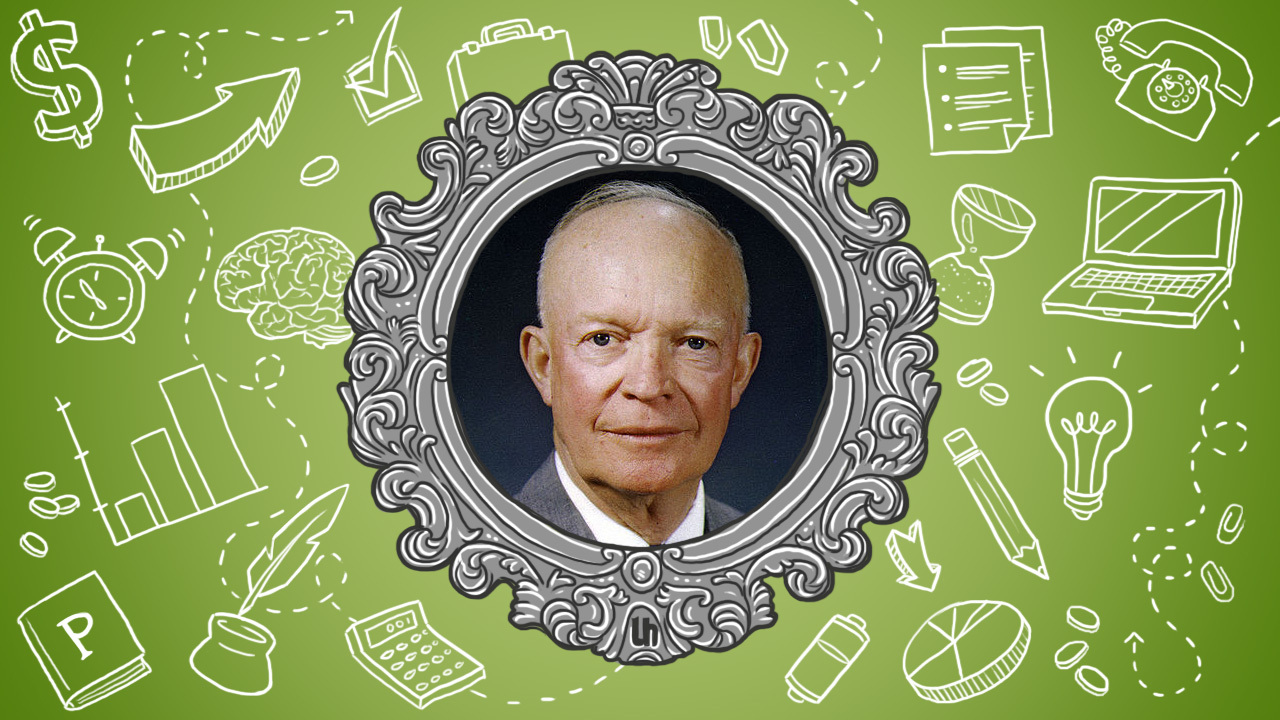
We have already written about how to cope with the fear and procrastination that stop us on the path to achieving our goals. However, after we came out of the “dead zone” of inaction and motivated ourselves to the result, we can fall into another extreme: after a long 8–12-hour working day, it is impossible to say what, in fact, was done. And most importantly - what is the result of the efforts we received? Has he advanced us to the goals?
As a result, it is easy to find yourself in a situation where “you are spinning like a squirrel in a wheel,” and things seem to be standing still. Accumulates only fatigue. The feeling of the heights reached does not appear.
')
Goal setting problem
This problem received in time management the name “Problem of goal setting ”. The consequences of mistakes in goal setting can be colossal: it seems that life is turning into a series of exhausting work marathons with no visible results. This is similar to the work of the ancient Greek king Sisyphus, who after death was sentenced to roll a huge stone onto the mountain, which barely reached the summit and was torn back down. And so - forever.

Selection of goals and priorities
Despite the fact that the problem is large-scale, and its consequences are complex and protracted, it is possible to deal with it. To do this, before starting any activity, you need to set goals and set priorities. How to do this, we will tell a little lower, and now focus, please, on one single thought:
Do not proceed to the fulfillment of the planned tasks if you cannot answer the question of how much and for what purpose this or that task advances you after it has been completed.
The way of doing “chaotically doing everything” can be almost perfect in order to “start the internal motor”, “wake up” and start doing something. I usually use household chores for this purpose - their set is rather limited, the result is immediately visible from their implementation and it would not be very comfortable to refuse to fulfill them in any case. This type of activity can be done in the “saw-did” mode.
But when it comes to achieving goals within the framework of a working draft, we have practically unlimited space for action, which means we can literally do “anything”. In the time shortage mode (namely, this resource is always limited here) this method will be unproductive. Therefore, here only the golden rule will save us: “First we think, then we do”.
Fast goal setting
Then the question arises: is there any effective method to “think quickly” so that this does not become a half-day task? Yes, it is quite appropriate to use a method known to almost everyone who has tried to understand time management at least once and which we have carried to the header of the post. This is the Eisenhower matrix. We have already written about it in other posts (we give them a more or less complete list at the end of ours). However, we would like to suggest our own way of using this matrix, which we have already used in practice more than once.
Traditionally, the invention of the matrix is attributed to Dwight Eisenhower, the 34th President of the United States, who was previously an army general. However, this is not quite true. Rather, the matrix got its name from the famous quotation of the president “Not all urgent matters are important, and not all important matters are urgent.”
The matrix allows you to quickly and fairly confidently sort your affairs, even if there are many. All you need is to go through the to-do list (which you probably already “unloaded” from your head using the GTD method) and answer yourself two questions for each task:
- It is important? Well no
- This is urgent? Well no
Depending on the combination of answers, each task without a long discussion falls into one of the quadrants of the matrix, divided into 4 quadrants, depending on the importance and urgency of the task.
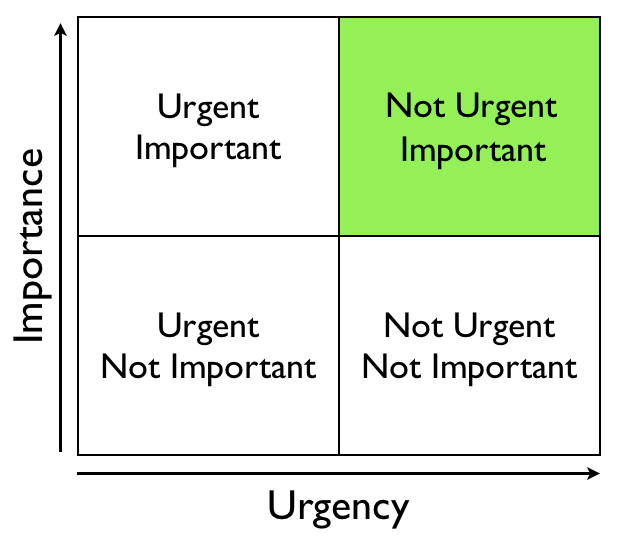
I must say, the Eisenhower matrix has many names and was presented in different ways by various adepts and creators of time management systems. In particular, the famous author of the GTD methodology Stephen Covey matrix is called the Urgency \ Importance matrix - he also recommended using it in his book “The 7 Skills of Highly Effective People.” This same method is sometimes called the visual version of the “Rule of Four D” which will be discussed below.
How to deal with each quadrant
Many modifications of the matrix itself and many interpretations of how to act with tasks in a particular quadrant. We dwell on two options, of which the first seems to us the most convenient.
Method 1: Do-Plan-Delegate-Eliminate
“Do - Plan - Charge - Do not do” - this will sound like this “formula of success” in translation and such actions need to be performed with tasks from the corresponding quadrants.
Quadrant 1
Urgent and important. Something happens in this quadrant: a fire or a baby cries or a bug blocking release. This is the “bad” quadrant, it should, if possible, be avoided. Occasionally here you can “put” tasks from the second quadrant, which I would like to close immediately for one irrational reason.
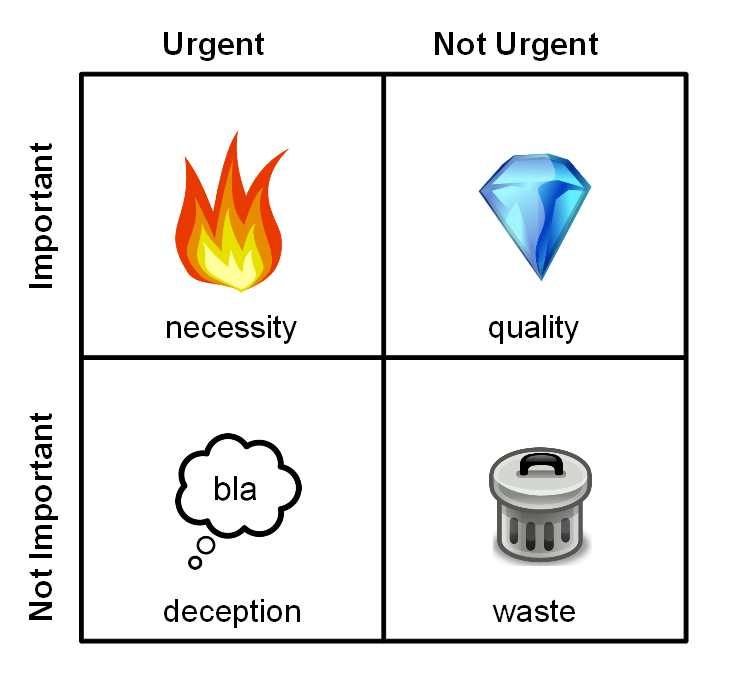
Quadrant 2
Important, but not urgent. In this quadrant are your most productive cases. As in the case of these cases, “time tolerates”, here we are already talking about rational planning and high-quality implementation of each task. This is what it is reasonable to spend time on today.
You can start doing things in order, and you can also go through the list of cases from this quadrant again asking yourself "Is this important?" And "Is it urgent?", Thus making another quadrant within the second quadrant and more detailed your goals .
Quadrant 3
Not important, but urgent. One of the most unproductive quadrants, because Because of their urgency, it is these cases that “snatch” you from the stream of your productive activities and force you to roll the stone up the mountain without a goal. These cases do not advance you towards your goals, as a rule, this is a different kind of information noise, for example, meetings, long telephone conversations and “nothing” dialogues instead of making decisions. It is recommended to delegate these tasks to someone else. You can delegate or not do them at all, the main thing is that the cases from this quadrant are not performed personally.
Quadrant 4
Not urgent and not important. Just forget about these matters. Indeed, something needs to be able to say no. Ideally, it is desirable that this quadrant remain empty. Nevertheless, various requests from people who are unlikely to do something in response to you, as well as dreams from the category “always wanted to find a yellow flower elephant on wheels and roll it,” most often fall into it. Not every spontaneous desire to spend time wisely if you want to achieve your intended goals.
Rule of four D
In fact, “4D” does not always describe the quadrants of the “Important-Urgent” matrix, because there are various interpretations of them; nevertheless, one of them quite fits the description above and can also be applied to four quadrants:
Do, Delegate, Defer, or Dump (Do, Lead, Postpone, Throw)
Do, Decide, Delegate, Delete (Do, Decide (in what order to do), Legs, Delete)
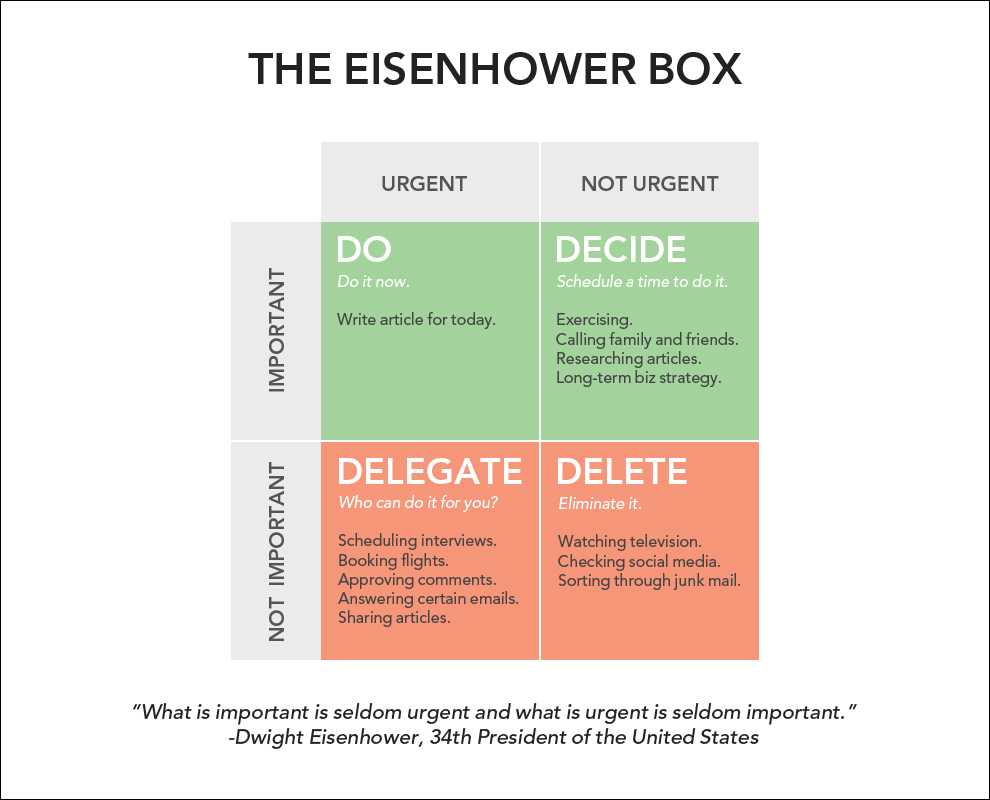
The main charm of the method is its speed. First, it presents the “task statistics” visually. You can immediately assess the effectiveness of the use of their temporary resources. Secondly, answering yes or no to just two questions, you divide all tasks into 4 groups. If you were given the task “divide your tasks into 4 groups”, it would take much longer.
Effectiveness check
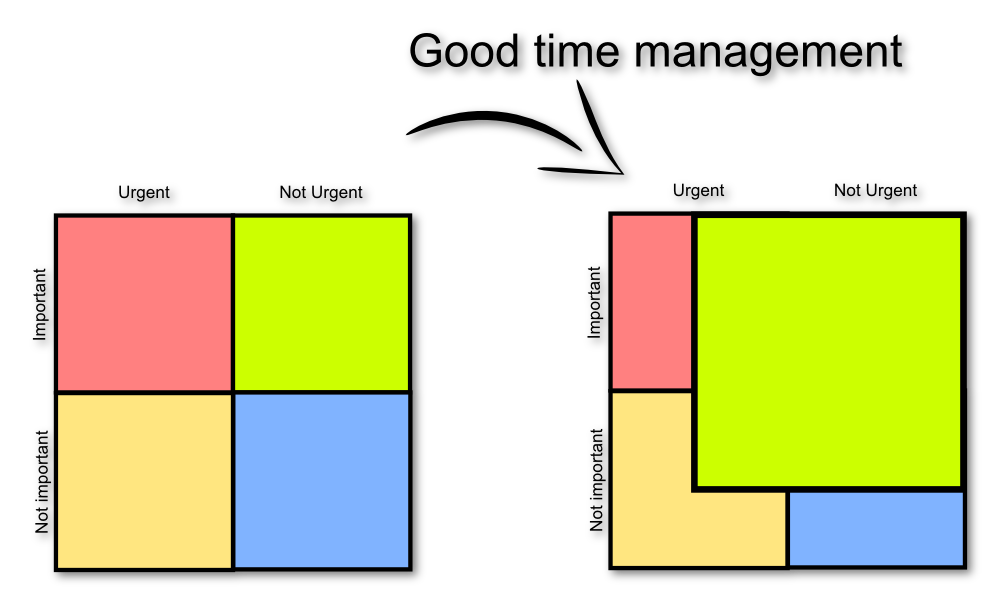
You can use the Eisenhower method not only to sort tasks into those that move you towards the goal and those that slow you down. You can also use it to evaluate your overall effectiveness. Ideally, after you do not hesitate to answer “yes and no” for two already known questions for each task, you will find that almost all of your tasks “fell” in the second quadrant.
But of course, most often this does not happen, and then the matrix clearly shows where you have a skew and where you risk being at the end of the day if you do not switch to productive tasks.
For the application of the method there is already a considerable amount of mobile, web and desktop software. And to set your goals and achieve them, you have the SmartProgress service , which has already helped accomplish more than 10,000 goals. And what is your goal?

PS If you do not have an account in Habré, you can express your opinion on this article in our blog - SmartTalks
Other posts about Eisenhower matrix
SCRUM board + Eisenhower quadrant for product management
Anti-aural decisions
Key points in time management
Overview of task management software in Outlook
Time management in practice
Managerial tools: 16 concepts for each day
Time management is really easy.
Source: https://habr.com/ru/post/245587/
All Articles